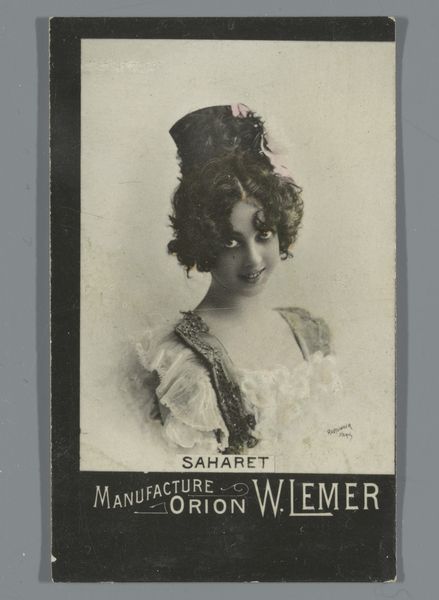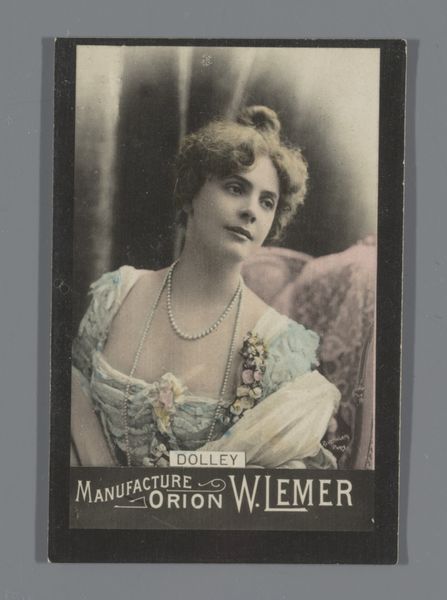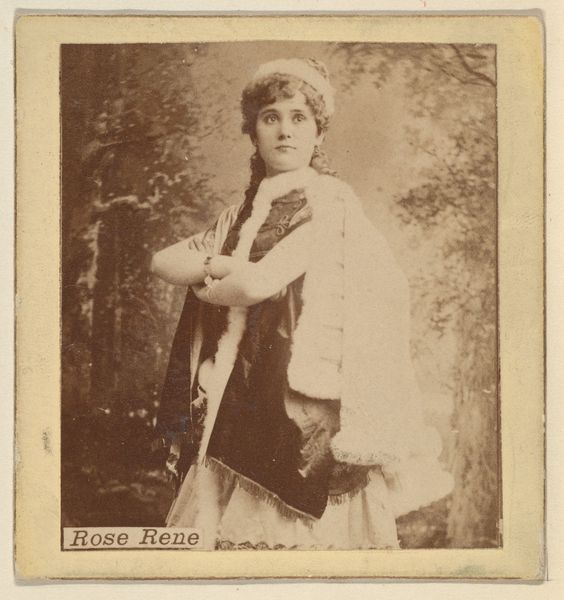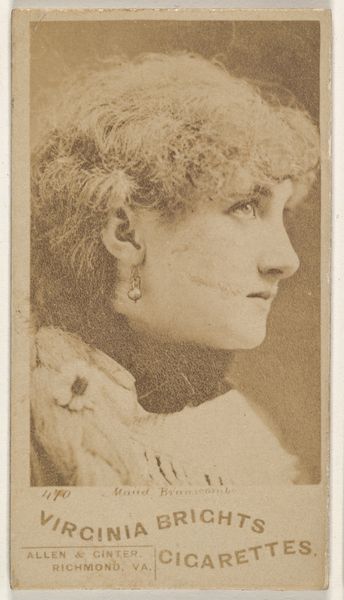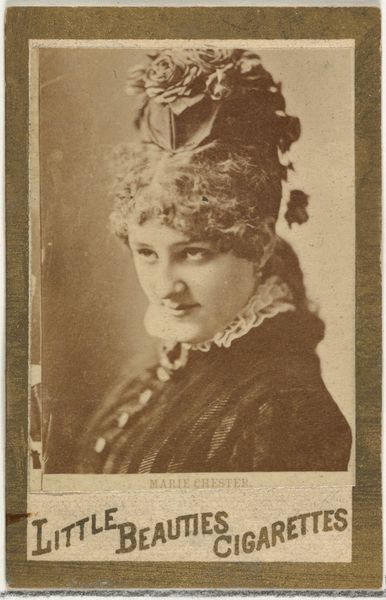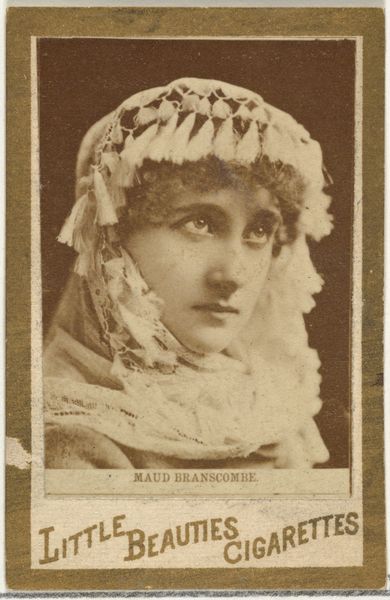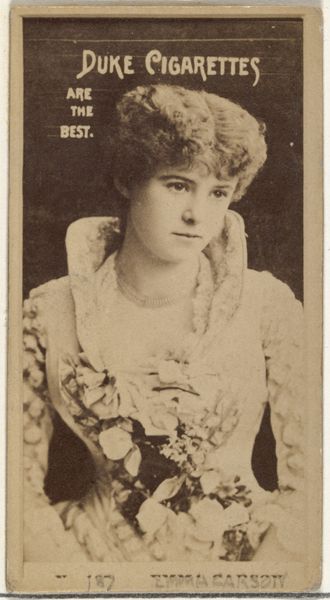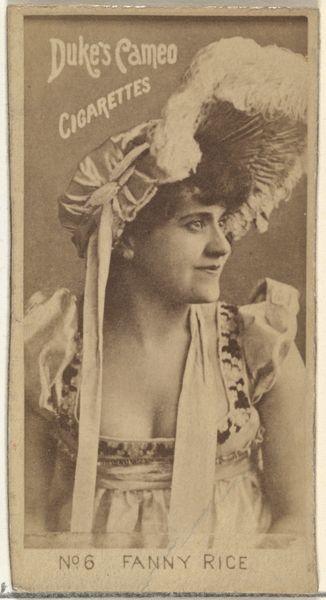
photography
#
portrait
#
still-life-photography
#
pictorialism
#
photography
Dimensions: height 59 mm, width 39 mm
Copyright: Rijks Museum: Open Domain
Curator: Here we have a rather striking advertising portrait from 1896 by Benjamin Joseph Falk. It features Madge Lessing and was made for Orion W. Lemer manufacture. It’s an example of Pictorialism in photography. What are your initial thoughts? Editor: Immediately, I'm struck by the dreamy softness. It’s less a snapshot and more like a memory trying to surface— hazy, romanticized. It’s not a pure representation, that’s for sure. Curator: That impression fits neatly within the context of Pictorialism, which rejected the idea of photography as purely representational. Artists manipulated the image to create an artistic effect. Think of it like painting with light. Editor: Yes, and that feathered hat! It’s practically screaming turn-of-the-century affluence and artistry. There's an almost theatrical quality about the image. It reminds me of early film stills. Curator: The symbols are fairly overt here; feathers often represent status and luxury, fitting the advert. Also the fur accents speak to the kind of lifestyle this manufacture appealed to, but I think that even on top of this the light in the photo is carefully employed to almost wash out what the real world looks like, in pursuit of an ideal version of what it should look like. Editor: Absolutely. It feels very curated and composed. There is this underlying mood of aspirations, projecting a very curated aesthetic through the model. Even though she gazes to the right and into some unknowable world, the focus is really on the surface – what is made available for consumption. Curator: Precisely. Even the soft focus might suggest a manufactured desire. A romanticized reality is definitely on display. Editor: It’s fascinating to see how, even then, advertising appropriated artistic techniques to create a compelling, even seductive, image. I mean, I would certainly want to buy whatever W. Lemer was manufacturing...well, maybe, I would need to know what it is! Curator: Yes, a striking reminder that even supposed "art for art's sake" can be quickly, easily, and persuasively co-opted by more mercenary and worldly concerns! Editor: Food for thought, indeed!
Comments
No comments
Be the first to comment and join the conversation on the ultimate creative platform.


